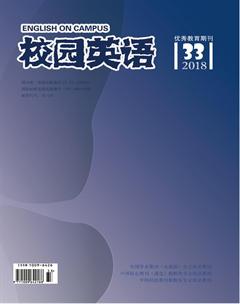Krashen’s Input Hypothesis of L2 Acquisition
Xia Qian
【Abstract】Krashen promoted his theory from the late 1970s and enriched it in the early 1980s. His theory has made a contribution to the understanding of second language acquisition, which centers around five fundamental hypotheses: theAcquisition-Learning hypothesis, the Monitor hypothesis, the Natural Order hypothesis, the Input hypothesis and the Affective Filter hypothesis. The Input hypothesis plays a central role for him, as he suggests, it may be the most significant notion in SLA of current times as it endeavors to deal the essential question about how we acquire language (Krashen, 1985). So this article will primarily focus on critically evaluating the Input hypothesis.
【Key words】Krashen; The Input hypothesis; L2 acquisition
【作者簡介】夏倩(1991-),女,汉族,重庆市沙坪坝区人,对外英语教学专业,英国爱丁堡大学硕士,现执教重庆师范大学涉外商贸学院,职称助教,研究方向:英语教学,英语教师发展。
The Input hypothesis states that it is essential for learners to be exposed to sufficient comprehensible input so that SLA can come into being (Mitchell, Myles& Marsden, 2013). Krashen puts forward a detailed process about how language acquisition takes place in this hypothesis:
“Humans acquire language in only one way-by understanding messages, or by receiving ‘comprehensible input……We move fromi, our current level, to i+1, the next level along the natural order, by understanding input i+1”(Krashen, 1985, p.2).
In other words, Krashen proposes a transition in the process of obtaining the input, which showcases that language acquisition is not a static process. This transitional process shares some similarities with Vygotskys the Zone of Proximal Development (ZPD) (Schinke-Llano,1993; Guerra, 1996), as Guerra (1996, p.7) contended that ‘Krashensi is what Vygotsky called the actual development of the child and the i+1 phase is equal to Vygotskys ZPD, while the latter emphasizes more on the assistance from others through interaction in order to move from the current stage to the potential stage. Although Dunn &Lantolf; (1998) argued ZPD and i+1 belonged to incommensurable theoretical contexts, both of them guide learners to the more competent level.
The Input hypothesis is complicated and paradoxical itself, so it has been frequently questioned with respect to its vagueness, lack of empirical evidence and ignorance of the function of output. First of all, in terms of the two parameters:i and i+1, it is very hard to figure out their levels; that is to say, to what extent can we define comprehensible input? Besides, how the ‘Language Acquisition Device internally operate remains ambiguous because Krashen only deploys it as a device but dose not explain how it works. Krashen himself has not made these doubts clear. Secondly, the lack of empirical evidence is another drawback which weakens his claim. Even though many endeavors to test his hypothesis have been conducted, it is hard for researchers to check corresponding progress and one reason may be, for instance, the difficulty of defining the ‘i phase (Ioup, 1984). Another critique is that the input hypothesis only concentrates on the input of learners but ignore the output that plays an important role in checking whether learners have mastered the language (Swain & Deters, 2007). Krashen (1985) did not acknowledge the role of output claiming that acquisition is subconcious and does not need production. In contrast, Swain and Lapkin (1995) regards the possibility of acquisition stemming from learners devotion to processing output.
In conclusion, despite different conflicts of the Input hypothesis, it creates new insights in second language acquisition and it is advisable to take particular contexts into account.
References:
[1]Dunn,W.E.&Lantolf;,J.P.Vygotskys zone of proximal development andKrashensi+ 1:Incommensurable constructs; incommensurable theories[J].Language Learning,1998,48(3):411-442.
[2]Guerra,C.Krashensi + 1 issue revisited from a Vygotskian perspective,1996.
[3]TESOL-GRAM[J].The Official Newsletter of Puerto Rico TESOL,23,7-8.
[4]Ioup,G.Two Readers Comment on Stephen Krashens Input Hypothesis:Testing the Relationsbip of Formal Instruction to the Input Hypothesis[J].TESOL quarterly,1984,18(2):345-350.
[5]Krashen,S.D.The input hypothesis:Issues and implications[J]. London:Longman,1985.
[6]Mitchell, R.Myles, F., & Marsden, E.Second language learning theories[J].London: Routledge,2013.
[7]Schinke-Llano,L.On the value of a Vygotskian framework for SLA[J].theory and research. Language Learning,1993,43:121–129.
[8]Swain, M.& Deters. P.“New Mainstream SLA Theory: Expanded and Enriched[J].Modern Language Journal,2007,91:820-836.
[9]Swain,M.&Lapkin;,S.Problems in output and the cognitive processes they generate:A step towards second language learning[J].Applied linguistics,1995,16(3):371-391.

